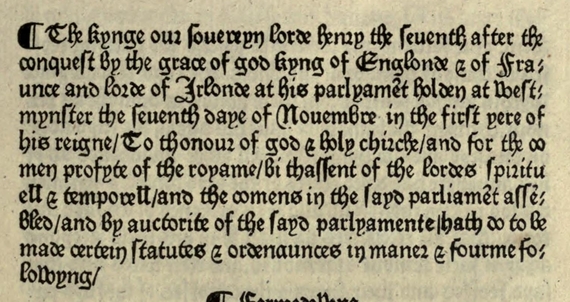
INTHEBEGINNINGWASTHEWORD, and the word was run together. Ancient texts (like the Greek of the Gospel of John) had few of the devices that tell readers where words begin and end (spaces), which words are proper names (the upper-lower case distinction), where breaks in meaning come (commas, dashes, semicolons and full stops), who said what (inverted commas), and so on.Thus readeth Johnson's Economist column on how punctuation is being changed by computers and the internet (cheers to Bird Dog for the Maggie's Farm link).
Most people take punctuation to be something obvious and settled.This causes John O’Callaghan to write from Singapore:
… The first English writers, when they punctuated at all, availed themselves of long-forgotten symbols like the diastole and trigon, the interpunct and the diple. Printing began the process of settling the punctuation system, but even that took four centuries. Samuel Johnson’s commas, in the mid-18th century, were not only heavy; many would be ungrammatical today, and this style persisted into the first editions of The Economist in 1843.
… As David Crystal, a linguist, points out in his history of punctuation (“Making a Point”) published in 2015, at the dawn of the 19th century, punctuation prescribers were still divided into those who insisted that punctuation follow grammar and those who wanted it to aid elocution. Even one of the grammarians, Lindley Murray, wrote in 1795, in a hugely influential grammar book, that a semicolon signalled a pause twice as long as a comma; that a colon was twice as long as a semicolon; and that a full stop was twice as long as a colon. (Try that next time you read a text aloud.)
One bit of punctuation that should follow the diastole, the trigon, the interpunct and the diple onto the scrap heap of history is the semicolon (Johnson, March 12th). Very few people know how to use semicolons correctly and The Economist’s constant overuse contradicts its advice—contained in its very own style guide—not to overdo them.Montreal's Mark Lee provides a reply:
Kurt Vonnegut said it best:
“Do not use semicolons. They are transvestite hermaphrodites representing absolutely nothing. All they do is show you’ve been to college.”
A reader called for semicolons to be thrown “onto the scrap heap of history” (Letters, March 26th). I disagree. A good guide is Lewis Thomas’s “Notes on Punctuation”, which says:
The semicolon tells you that there is still some question about the preceding full sentence; something needs to be added; it reminds you sometimes of the Greek usage. It is almost always a greater pleasure to come across a semicolon than a period. The period tells you that that is that; if you didn’t get all the meaning you wanted or expected, anyway you got all the writer intended to parcel out and now you have to move along. But with a semicolon there you get a pleasant little feeling of expectancy; there is more to come; to read on; it will get clearer.

• Related: 5 Punctuation Marks That Look Nothing Like They Used To
• 10 Obscure Punctuation Marks That Should Really Get More Play
• Did the Serial Comma Take a Hit?
• The Case Against the Misuse and Overuse of [Square] Brackets (and Parentheses)
